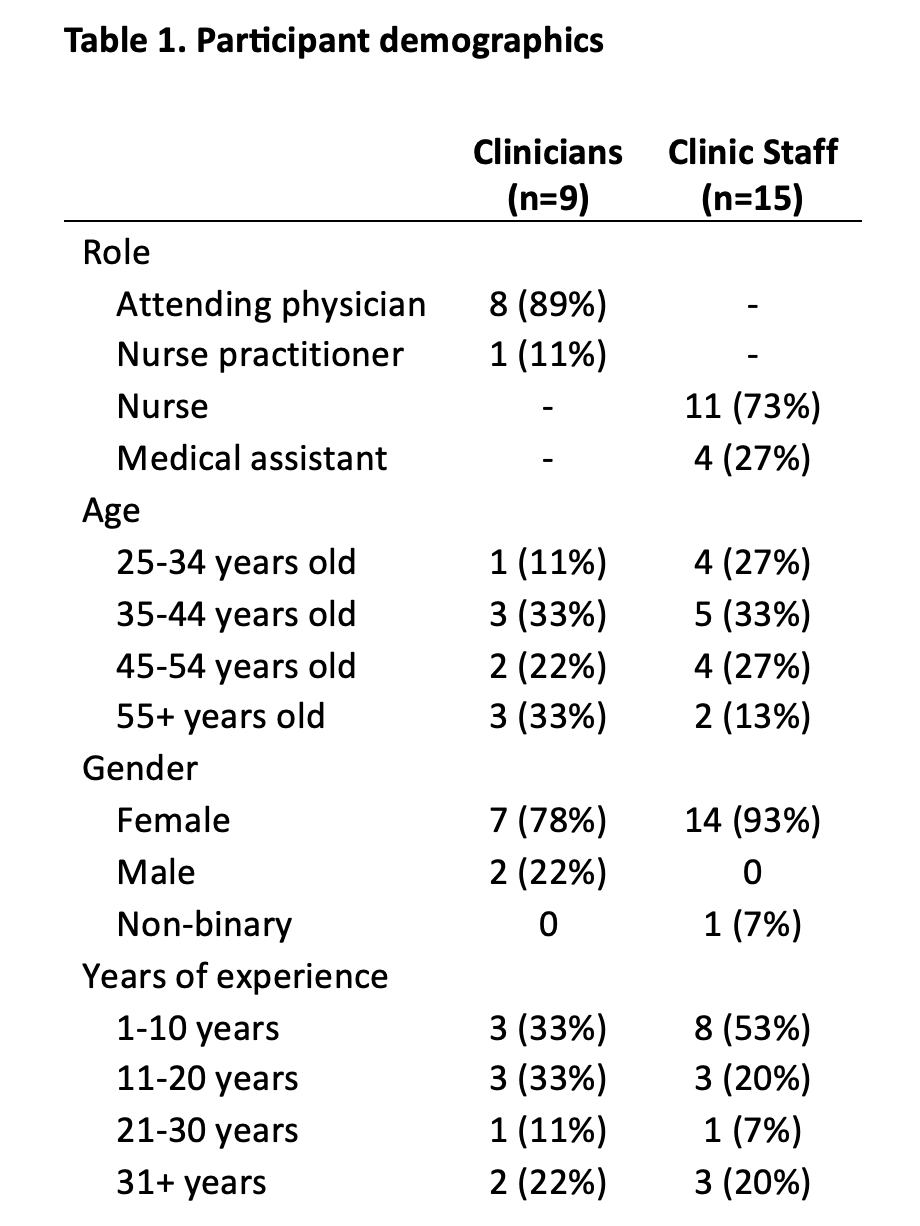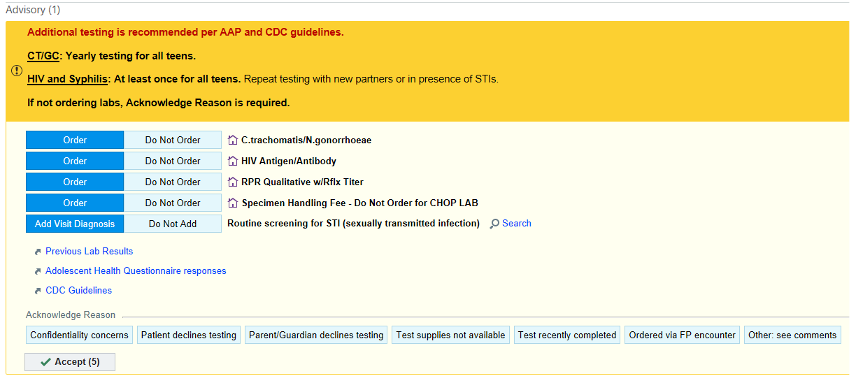Technology
Session: Technology 1
165 - Feasibility and Acceptability of an Electronic Clinical Decision Support System for Sexually Transmitted Infection Testing for Adolescents
Sunday, May 5, 2024
3:30 PM - 6:00 PM ET
Poster Number: 165
Publication Number: 165.1893
Publication Number: 165.1893

Gabrielle DiFiore, MPH (she/her/hers)
Clinical Research Project Manager
Children's Hospital of Philadephia
Philadelphia, Pennsylvania, United States
Presenting Author(s)
Background: Routine adolescent sexually transmitted infection (STI) screening is recommended by the American Academy of Pediatrics, but national screening rates are suboptimal. Clinical decision support (CDS) systems in electronic health records (EHRs) can standardize STI screening but have not been tested in the pediatric setting.
Objective: To develop a CDS system using human-centered design (HCD) methods to effectively prompt STI screening for at-risk adolescents.
Design/Methods: We applied a rigorous HCD process involving work environment analysis, user involvement indesign, iterative improvements, and evaluation of the system’s use in the context of adolescent well visits. We engaged two cohorts: (1) clinicians (attending physicians and nurse practitioners), and (2) clinic staff. In usability sessions, clinicians were presented with scenario-based, high-fidelity prototypes of system components and were encouraged to talk aloud while performing tasks, communicating their understanding of the user interface and their selections in performing the tasks. After each session, we measured system usability and satisfaction (via the System Usability Scale (SUS)) and reviewed content to inform the next prototype version. Clinical staff engaged in a task analysis, where they evaluated mockups of proposed clinic workflows related to STI testing. Evaluation measures addressed 1) whether the CDS system met the objective of supporting STI screening; and, 2) system usability and efficiency.
Results: Most clinicians (n=9) and clinical staff (n=15) were female and experience varied (Table 1). Clinician system testing was performed over 7 iterative versions of system prototypes. Common usability and task analysis themes for both cohorts included: clinicians should be the main focus of the system (as STI testing often needs clinician-patient conversations), the system should activate for all adolescents reporting sexual activity, and recommended labs should be pre-selected to streamline ordering. The final CDS system is a Best Practice Alert within the EHR alerting the clinician to order STI testing for adolescents reporting sexual activity on their pre-visit health questionnaire (Figure 1). 100% of clinicians (n=9) were satisfied with the system. The mean SUS score was 91 of 100 (excellent to best).
Conclusion(s): Our HCD process identified preferences for a system that simplified identification of adolescents who should be screened while supporting lab ordering. Future efforts will focus on measuring CDS-related clinical outcomes.


